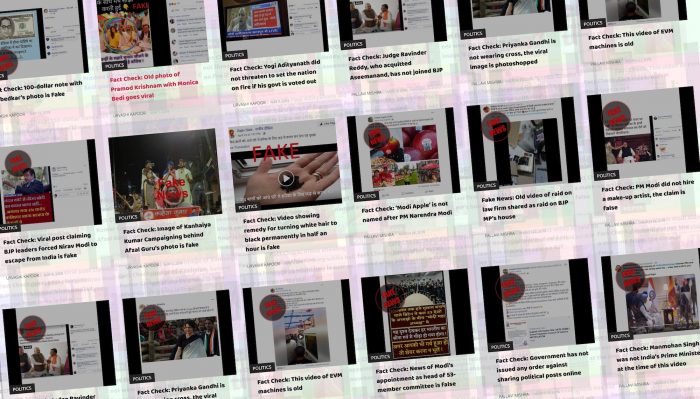Real News About Fake News
The growing stream of reporting on and data about fake news, misinformation, partisan content, and news literacy is hard to keep up with. This weekly roundup offers the highlights of what you might have missed.

Laura Hazard OwenAugust 16, 2019
Plus, a new free course for online fact-checking taught via workspace app Notion.

Laura Hazard OwenAugust 2, 2019
Plus, which Facebook pages get the largest percentage of “angry” reactions.

Laura Hazard OwenJuly 26, 2019
Plus: Alex Stamos and Renee DiResta are launching an “observatory” for internet abuse at Stanford, and misconceptions about disinformation.

Laura Hazard OwenJuly 19, 2019
Plus: How college students evaluate fake vs. real news, and an algorithm that doesn’t just identify fake news but explains why.

Laura Hazard OwenJune 28, 2019
Plus: A fake news game that seems to inoculate players against fake news.

Laura Hazard OwenJune 14, 2019
“In the U.S., though there are some outlets with populist audiences — such as Fox and HuffPost — it is clear that the majority of outlets have audiences that are predominately non-populist left, such as The New York Times.”

Laura Hazard OwenMay 31, 2019
Plus: A new raft of misinformation research to read, and the actual dollar cost of anti-vaxxing.

Laura Hazard OwenMay 23, 2019
“More than a quarter of the content shared by the Bharatiya Janata Party and a fifth of the content shared by the Indian National Congress is junk news.”

Laura Hazard OwenMay 17, 2019
Plus: Whether Americans believe climate change is caused by humans depends on how you ask the question, and WhatsApp clones are getting around some restrictions designed to limit the spread of fake news.

Laura Hazard OwenMay 3, 2019
“Even facts are opinions.”

Laura Hazard OwenApril 5, 2019
Plus: YouTube executives ignores its “false, incendiary and toxic content” for years, and white nationalism sneaks through Facebook’s ban.

Laura Hazard OwenMarch 29, 2019
Plus: A revived hoax on social media leads to attacks on Roma in France, Facebook bans white nationalism, and how “Suspected Human Trafficker, Child Predator May Be in Our Area” became the most-shared Facebook story of 2019.

Laura Hazard OwenMarch 22, 2019
Plus: Instagram is fertile ground for conspiracy theories, Apple gives to media literacy, and a terror attack comes with its own media strategy.

Laura Hazard OwenFebruary 28, 2019
Other participants: Fire stations, and police departments, and schools.







